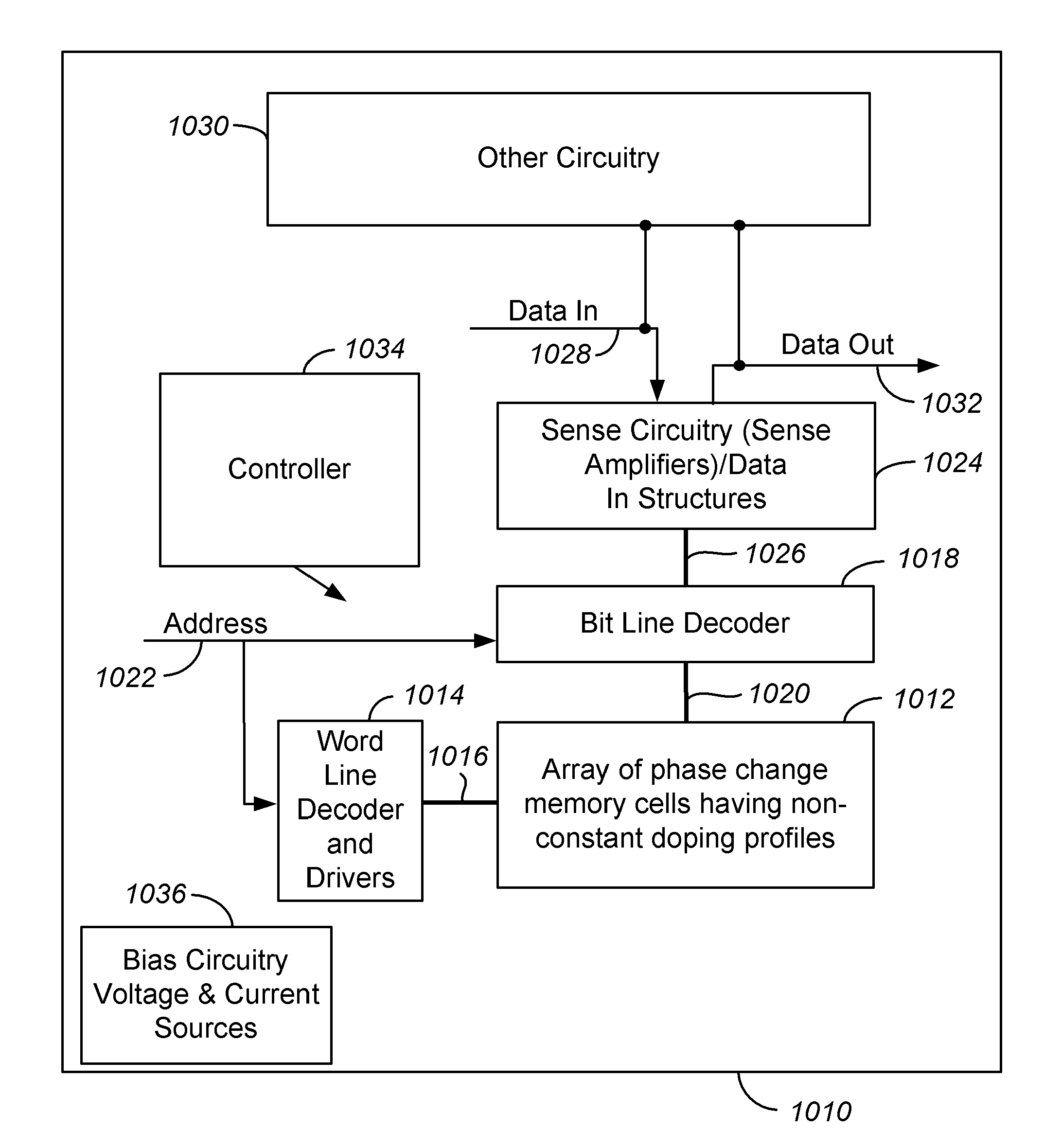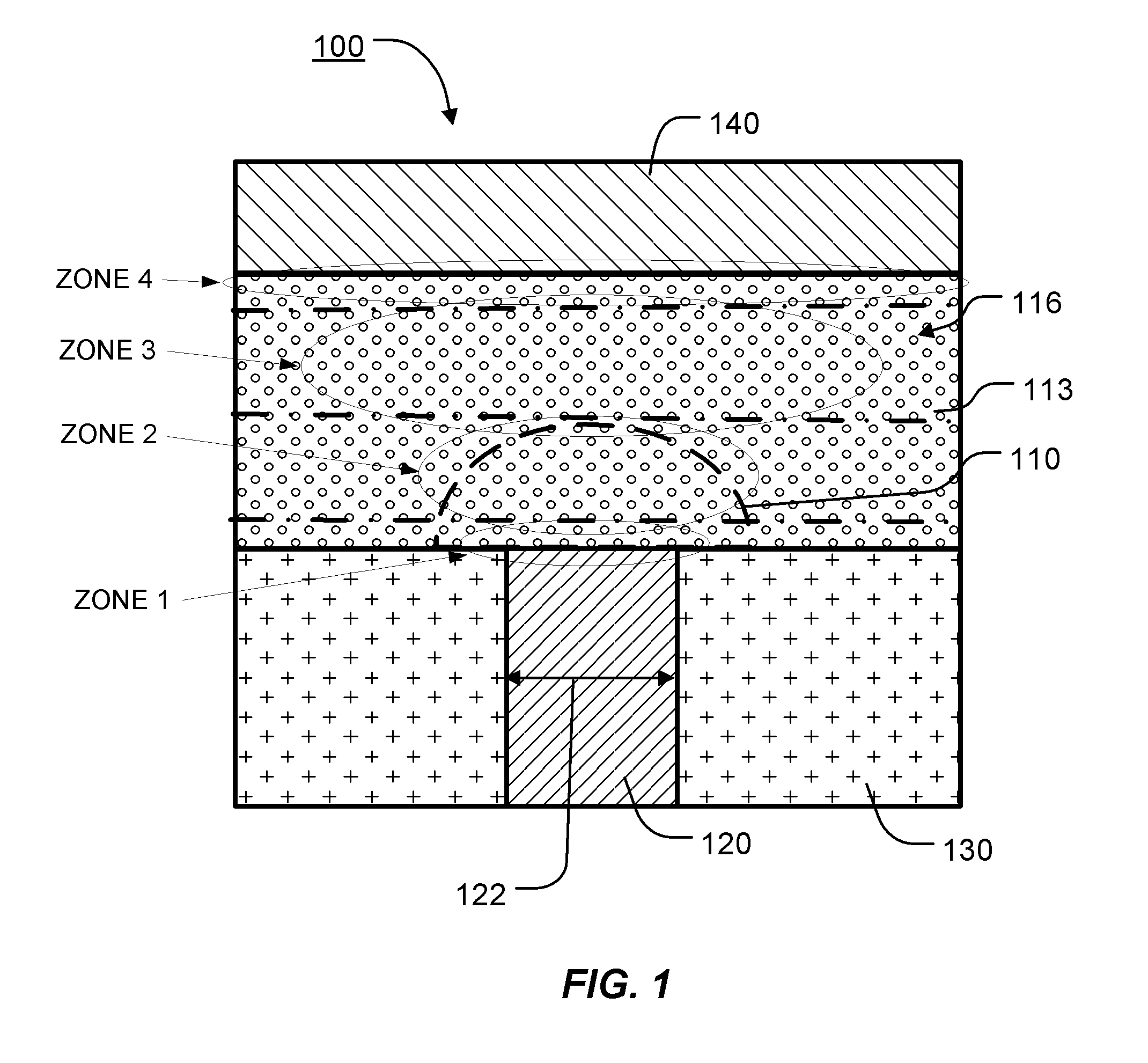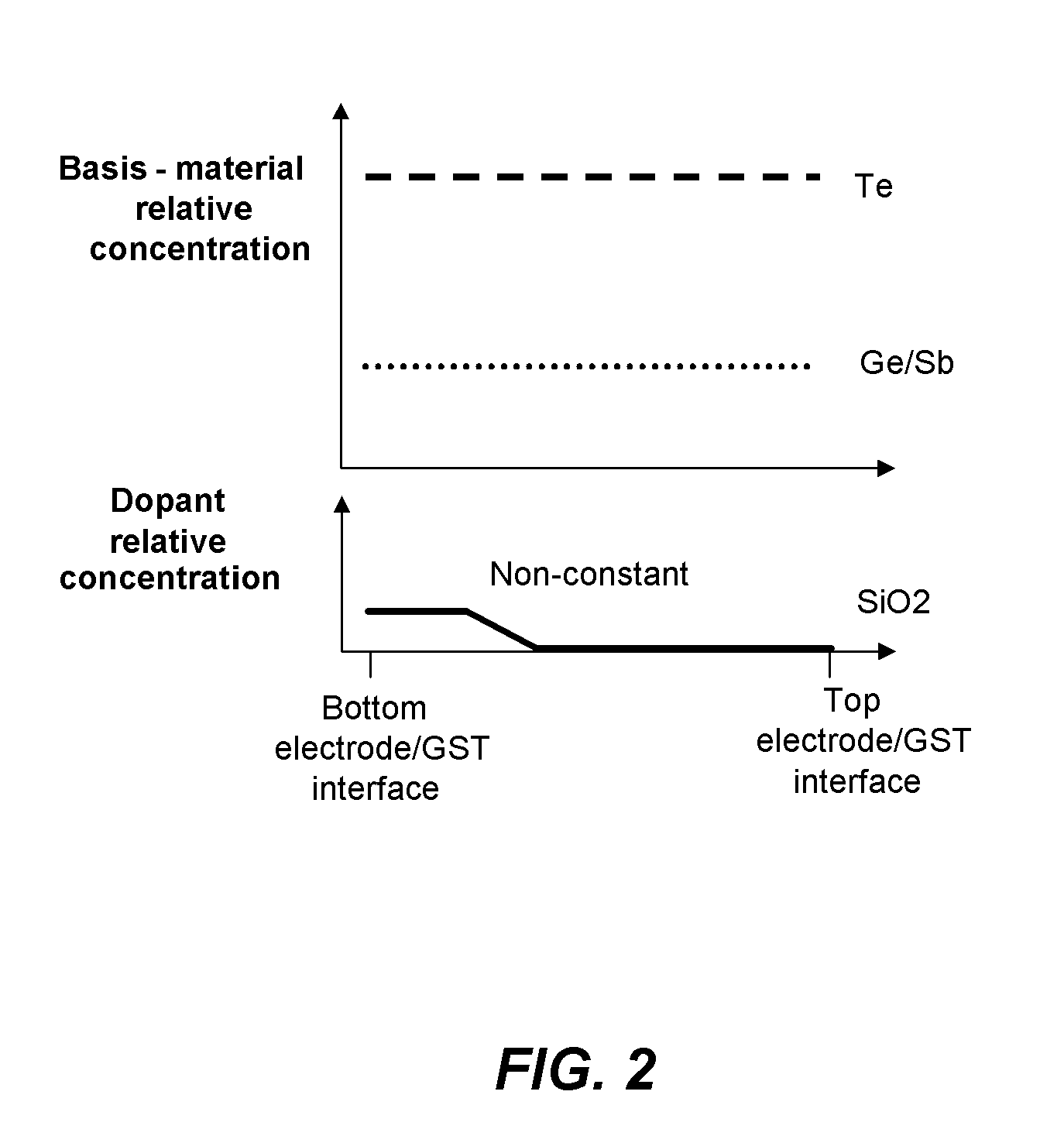Phase change memory having one or more non-constant doping profiles
a phase change memory and non-constant technology, applied in the field of memory devices, can solve problems such as reducing the overall resistance of the cell
- Summary
- Abstract
- Description
- Claims
- Application Information
AI Technical Summary
Benefits of technology
Problems solved by technology
Method used
Image
Examples
first embodiment
[0038]FIG. 2 illustrates the non-constant additive concentration profile using silicon oxide as an additive. As can be seen in FIG. 2, the concentration of SiO2 is higher at the interface between the bottom electrode 120 and the memory element 116, than at the interface between the top electrode 140 and the memory element 116. In the illustrated example of FIG. 2 additives of the phase change material at the interface between the bottom electrode 120 and the memory element 116 have an Si concentration of about 5 at %+ / −2% at, and an O concentration of about 10 at %+ / −4 at %. The concentration of SiO2 then transitions downward to substantially undoped GST at the interface with the top electrode, resulting in the non-constant additive concentration profile as shown.
[0039]The active region 110 comprises phase change material domains within a dielectric-rich mesh (not shown), caused by separation of the silicon oxide doping from the phase change alloy, as described in detail in U.S. pat...
second embodiment
[0045]FIG. 3 illustrates a non-constant additive concentration profile using a composite doping of silicon oxide and silicon. In the illustrated example of FIG. 3, the silicon oxide additive of the phase change material at the interface between the bottom electrode 120 and the memory element 116 has a Si concentration of about 5 at %+ / −2% at, and an O concentration of about 10 at %+ / −4 at %. The maximum silicon additive in this example is between about 1 to 5 at % in addition to the silicon that is counted part of the silicon dioxide. Thus, a consolidated concentration profile for the elements silicon and oxygen, along with the GST basis material can include at 10% silicon, 10 at % oxygen and 80 at % for the combination of the elements of GST. It is found that silicon additives improve retention time and endurance, but can retard set time. Putting higher concentrations of silicon within the active region 110 can improve retention in the active region, while for regions far away from...
third embodiment
[0046]FIG. 4 illustrates a non-constant additive concentration profile using a composite doping of silicon oxide and silver. In the illustrated example of FIG. 4 the silicon oxide additive of the phase change material at the interface between the bottom electrode 120 and the memory element 116 has a Si concentration of about 5 at %+ / −2% at, and an O concentration of about 10 at %+ / −4 at %. It is found that adding silver can improve retention but can also make the cells' threshold voltage too high for practical implementation in a chip. The non-constant additive concentration profile of silver may lower the threshold voltage to a practical value while still providing good retention for the cell.
PUM
 Login to View More
Login to View More Abstract
Description
Claims
Application Information
 Login to View More
Login to View More - R&D
- Intellectual Property
- Life Sciences
- Materials
- Tech Scout
- Unparalleled Data Quality
- Higher Quality Content
- 60% Fewer Hallucinations
Browse by: Latest US Patents, China's latest patents, Technical Efficacy Thesaurus, Application Domain, Technology Topic, Popular Technical Reports.
© 2025 PatSnap. All rights reserved.Legal|Privacy policy|Modern Slavery Act Transparency Statement|Sitemap|About US| Contact US: help@patsnap.com



